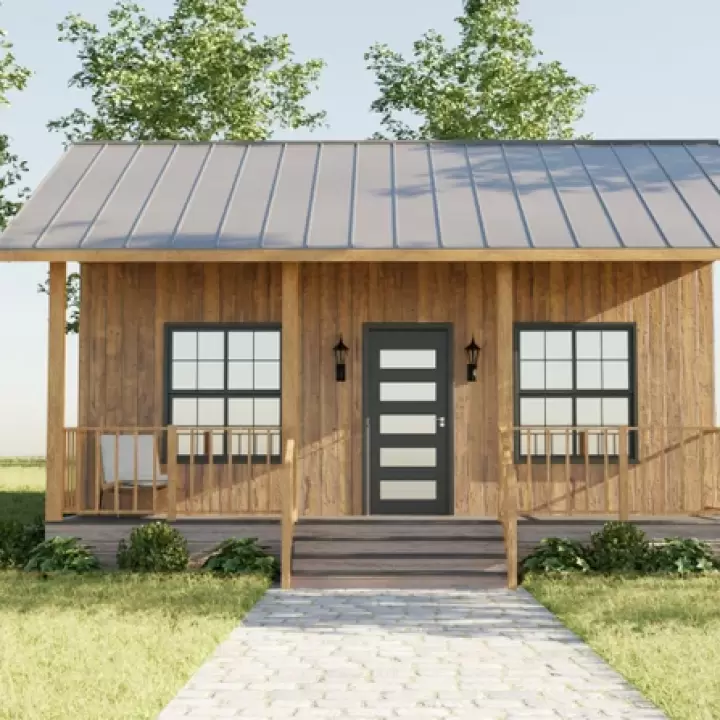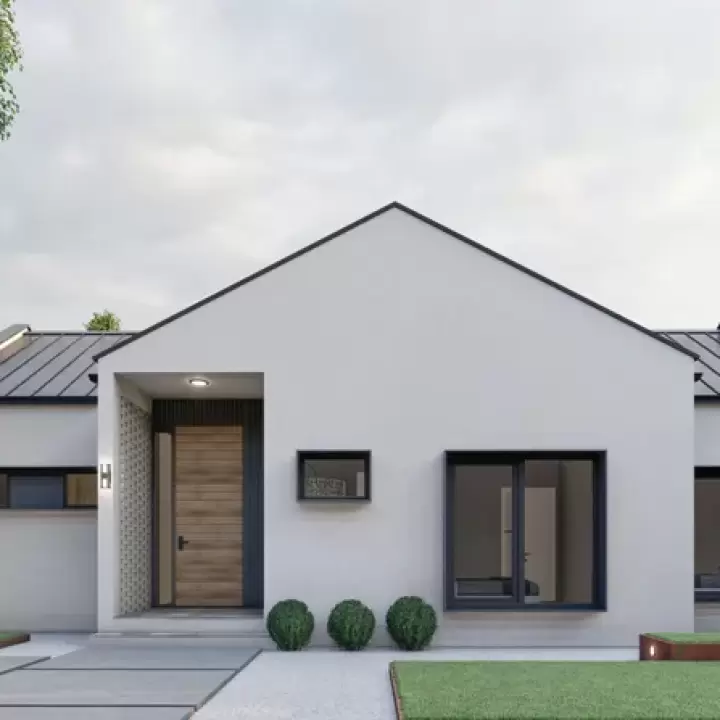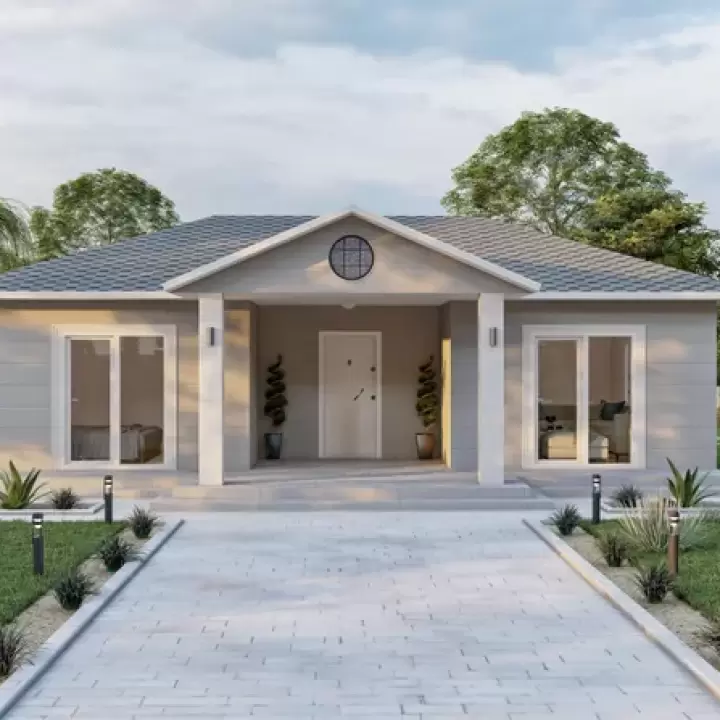
Designing Your Dream A-Frame Cottage: Innovative Blueprints for Small Spaces
A-frame cottages have become a symbol of cozy, efficient, and stylish living. Their distinctive triangular shape and open interiors make them ideal for those looking to maximize their living space while embracing a minimalist lifestyle. Whether you're dreaming of a charming getaway or a practical year-round residence, A-frame cottages offer innovative design solutions for small spaces. In this article, we'll explore various aspects of designing your dream A-frame cottage, focusing on innovative blueprints and practical tips to help you create the perfect small home.
The Appeal of A-Frame Cottages
Unique Design Features
A-frame cottages stand out due to their unique design elements:
- Triangular Shape: The sloping roofline of an A-frame cottage creates a striking silhouette that sets it apart from traditional rectangular homes.
- Open Interiors: The design often features open, airy spaces with high ceilings that make small interiors feel larger and more welcoming.
- Large Windows: Expansive windows are a hallmark of A-frame cottages, allowing natural light to flood the interior and providing stunning views of the surrounding landscape.
Advantages of A-Frame Cottages
- Efficient Use of Space: The A-frame design maximizes the use of vertical space, making it ideal for small lots or compact living.
- Energy Efficiency: The shape of the roof allows for better insulation and energy efficiency, helping to reduce heating and cooling costs.
- Versatility: A-frame cottages can be adapted to various styles and uses, from rustic cabins to modern retreats.
Innovative Blueprints for Small Spaces
Maximizing Floor Space
When designing an A-frame cottage, efficient use of floor space is crucial. Here are some tips for maximizing your small home's layout:
- Open Floor Plans: Incorporate an open floor plan that combines the kitchen, dining, and living areas. This approach helps to create a seamless flow and makes the space feel larger.
- Multi-Functional Furniture: Opt for furniture that serves multiple purposes, such as a sofa bed or a dining table that doubles as a workspace.
- Built-In Storage: Integrate built-in storage solutions, such as shelves and cabinets, to keep the space clutter-free and organized.
Utilizing Vertical Space
The vertical design of A-frame cottages allows for creative use of space. Consider these ideas for making the most of your vertical space:
- Lofts and Mezzanines: Adding a loft or mezzanine can provide additional sleeping or storage areas without taking up valuable floor space.
- Vertical Storage Solutions: Install tall shelves or cabinets that reach up to the ceiling to store items and maximize vertical storage.
- Hanging Fixtures: Use hanging light fixtures and other decorative elements to add visual interest and save floor space.
Integrating Outdoor Spaces
Connecting your A-frame cottage to outdoor areas can enhance your living experience. Here are some ways to integrate outdoor spaces:
- Decks and Patios: Create a deck or patio to extend your living area outdoors. This space can serve as a dining area, relaxation zone, or outdoor kitchen.
- Large Windows and Doors: Incorporate large windows and sliding doors that open up to outdoor spaces, blurring the line between indoor and outdoor living.
- Landscape Design: Plan your landscaping to complement the A-frame design, with features like natural stone pathways, garden beds, and outdoor seating areas.
Practical Considerations for A-Frame Cottage Design
Budgeting and Cost Management
Designing an A-frame cottage requires careful budgeting to ensure you stay within your financial limits. Consider these cost management tips:
- Plan Ahead: Create a detailed budget that includes construction costs, materials, furnishings, and any additional expenses.
- Choose Cost-Effective Materials: Opt for affordable yet durable materials that fit your budget without compromising on quality.
- DIY Projects: Take on DIY projects where possible to save on labor costs. Simple tasks like painting or landscaping can be done on your own.
Building Codes and Regulations
Before starting your A-frame cottage project, it's essential to familiarize yourself with local building codes and regulations. Ensure that your design complies with zoning laws, structural requirements, and safety standards.
- Consult with Professionals: Work with architects and builders who have experience with A-frame structures to ensure your design meets all necessary codes and regulations.
- Obtain Permits: Secure the required permits and approvals before beginning construction to avoid any legal issues.
Sustainability and Eco-Friendly Design
Incorporating sustainable and eco-friendly design practices can enhance the environmental impact of your A-frame cottage. Consider these sustainable design elements:
- Energy-Efficient Windows and Insulation: Invest in energy-efficient windows and high-quality insulation to reduce energy consumption and improve comfort.
- Solar Panels: Install solar panels to generate renewable energy and reduce reliance on non-renewable sources.
- Sustainable Materials: Choose environmentally friendly materials, such as reclaimed wood or low-VOC paints, to minimize your ecological footprint.
FAQ: Common Questions About A-Frame Cottages
What are the benefits of an A-frame cottage?
Answer: A-frame cottages offer several benefits, including efficient use of space, energy efficiency, and a unique design that stands out from traditional homes. They also provide an open, airy interior and can be adapted to various styles and functions.
How can I maximize space in a small A-frame cottage?
Answer: To maximize space, use open floor plans, multi-functional furniture, and built-in storage solutions. Additionally, utilize vertical space with lofts and tall shelves, and integrate outdoor spaces to extend your living area.
What should I consider when budgeting for an A-frame cottage?
Answer: When budgeting, plan for construction costs, materials, furnishings, and additional expenses. Choose cost-effective materials, consider DIY projects to save on labor costs, and consult with professionals to get accurate estimates.
How do I ensure my A-frame cottage complies with building codes?
Answer: Familiarize yourself with local building codes and regulations, work with experienced architects and builders, and obtain the necessary permits and approvals before starting construction.
What are some eco-friendly design options for an A-frame cottage?
Answer: Consider energy-efficient windows and insulation, install solar panels, and use sustainable materials such as reclaimed wood or low-VOC paints to enhance the environmental impact of your A-frame cottage.
Designing an A-frame cottage is an exciting opportunity to create a unique and functional living space. By focusing on innovative blueprints and practical considerations, you can turn your dream A-frame cottage into a reality that perfectly fits your needs and style.




